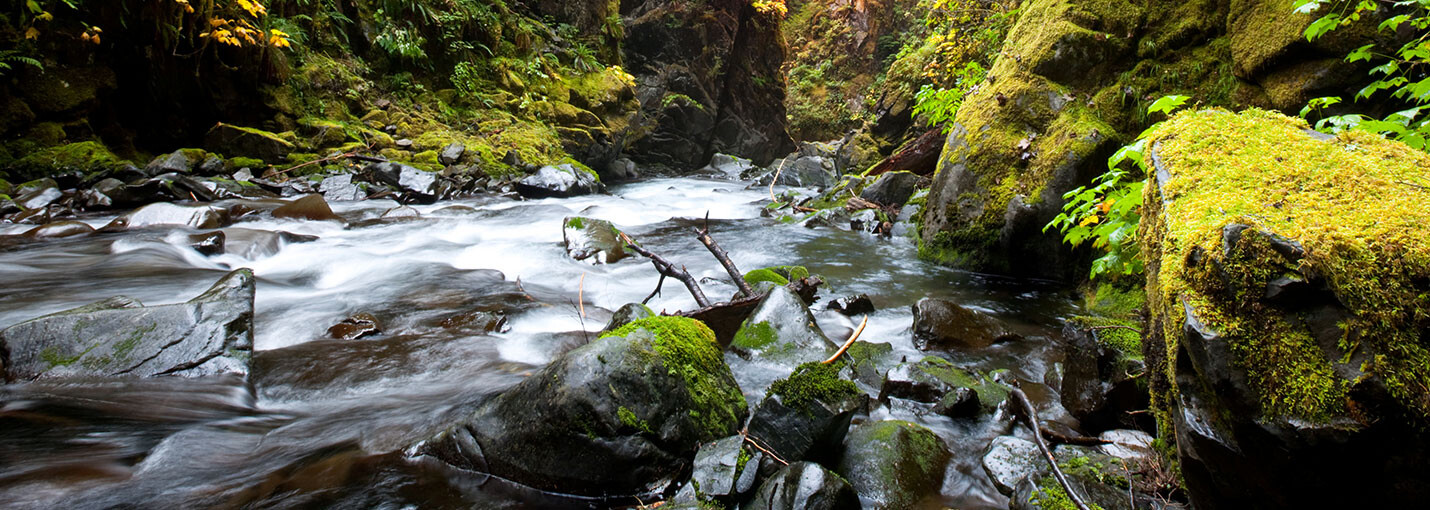Asbestos abatement at Swift Creek
Abatement efforts are underway to contain the dangers of asbestos fibers exposed by swift creek landslides.
Asbestos becomes dangerous when toxic air is breathed in, depositing particles on the lungs. In the short-term, this can cause significant respiratory issues, including a chronic cough, asthma and emphysema. In the longer-term, deadly cancers, including mesothelioma, ovarian, thyroid, liver, kidney and lung cancers can result.
The American Lung Association notes that there is a risk that once inhaled, some asbestos fibers will never leave the body.1
The National Cancer Institute states that “there is no safe level of asbestos exposure.”2
This is why there are ongoing abatement efforts underway to limit the amount of asbestos being carried into the communities along Swift Creek and the Sumas River in Washington. The federal government and the state of Washington are collaborating to reduce the risk of residents being exposed to toxic sediments.
Asbestos Sediment Deposits Along Swift Creek
A massive landslide on the 225-acre area that makes up the Sumas Mountain in Washington has caused asbestos-containing sediment to be deposited along the Sumas River and Swift Creek. As water flows along the surface of the slide, it picks up large amounts of debris and carries this into the waterways.
Swift creek landslide deposits may contain harmful asbestos.
As much as 120,000 cubic yards of toxic sediment from the landslide is deposited into the creek each year, and state and federal departments have been engaging in abatement efforts to limit the flow of asbestos into residential areas.
Ongoing monitoring of potential asbestos exposure at Swift Creek
The Washington State Department of Health intermittently checks for asbestos-related health concerns in those living around Swift Creek and Sumas Mountain. Ongoing dredging is also performed in order to prevent the creek from flowing over roadways and flooding homes. Previously dredged minerals remaining on creek banks are sprayed with tackifier to prevent asbestos from being released into the air.
“The overall evidence suggests there is no safe level of asbestos exposure.”Source: National Cancer Institute (NIH) 3 |
EPA Sampling: Asbestos Contamination is Increasing
In 2006, the Environmental Protection Agency (EPA) took samples that showed that the dredged material along the waterways contained chrysotile asbestos at up to 4%. Using this data, the agency estimated cancer risks for adults and children, in some cases, were greater than 1 in 10,000.
EPA findings on asbestos exposure and swift creek landslides
Two years later, in 2008, the EPA again took samples from the creek and riverbeds and found that the concentration of asbestos had risen to as much as 6%. Then, the following year, heavy rains caused the Sumas River to flood and leave behind large amounts of sediment, which, again, were sampled. The agency found that these deposits contained as much as 27% asbestos!
EPA recommends avoiding Swift Creek landslide sediment to minimize asbestos exposure.
In the past, the state had allowed the deposits to be used in construction projects throughout the area. However, after the EPA’s findings, it recommended that the sediment be avoided entirely. Swift Creek and the Sumas River continue to carry asbestos, and, in dry weather, deposits can lead to the dangerous fibers migrating into nearby homes. Over time, it became evident that a plan needed to be put into place to limit asbestos exposure.
!
If you may have been exposed to asbestos, speak with your healthcare provider about tests and screening to help detect the presence of asbestos fibers and asbestos-related damage.

The Swift Creek Action Plan
The Swift Creek Action Plan, developed in 2019 by the Washington State Department of Ecology and Whatcom County Department of Public Works, serves as a guide for eliminating asbestos exposure in the area. As part of the plan, residents are encouraged to assume that any floodwater and soil from the creek and river contain asbestos and to use respiratory protection when in those areas. They are also instructed to avoid “walking, driving, cycling, riding horses, or disturbing the riverbed or dredge piles along Swift Creek and Sumas River, or where flooding may have left deposits.”
Ongoing mitigation measures to deal with Swift Creek asbestos exposure
The action plan is ongoing and includes many measures to continually limit the amount of asbestos in the water and soil. Of course, these efforts are costly and significant funding has to continually be allocated to the plan in order for it to be properly carried out. In the meantime, there are concerns of legal issues as a result of residential exposure to asbestos, and this is one mess that’s likely to be around for a long time to come.
AsbestosClaims.Law
AsbestosClaims.law is your comprehensive resource for all things asbestos. We hope this information is helpful.
If you have any additional questions or concerns related to asbestos, check out our website and YouTube page for videos, infographics and answers to your questions about asbestos, including health and safety, asbestos testing, removing asbestos from your home and building, and legal information about compensation for asbestos injuries.
And if you believe that you were exposed to asbestos, or have been diagnosed with an asbestos illness, you could be entitled to significant compensation—money you could use to cover the costs of asbestos removal services, pay for medical treatment, and preemptively protect your physical well-being.
All without filing a lawsuit.
If you’d like help with filing a claim, please get in touch by email at [email protected], or call or text us at (833) 4-ASBESTOS (427-2378) or (206) 455-9190. We’ll listen to your story and explain your options. And we never charge for anything unless you receive money in your pocket.
Melious, Jean O. (2012) “The Emerging Legal Problem of Naturally Occurring Asbestos and Washington State’s Swift Creek Conundrum,” Seattle Journal of Environmental Law, 2(1). https://digitalcommons.law.seattleu.edu/sjel/vol2/iss1/4.
1 https://www.lung.org/clean-air/at-home/indoor-air-pollutants/asbestos
2 National Cancer Institute (NIH), Asbestos Fact Sheet.
3 National Cancer Institute (NIH), Asbestos Fact Sheet.